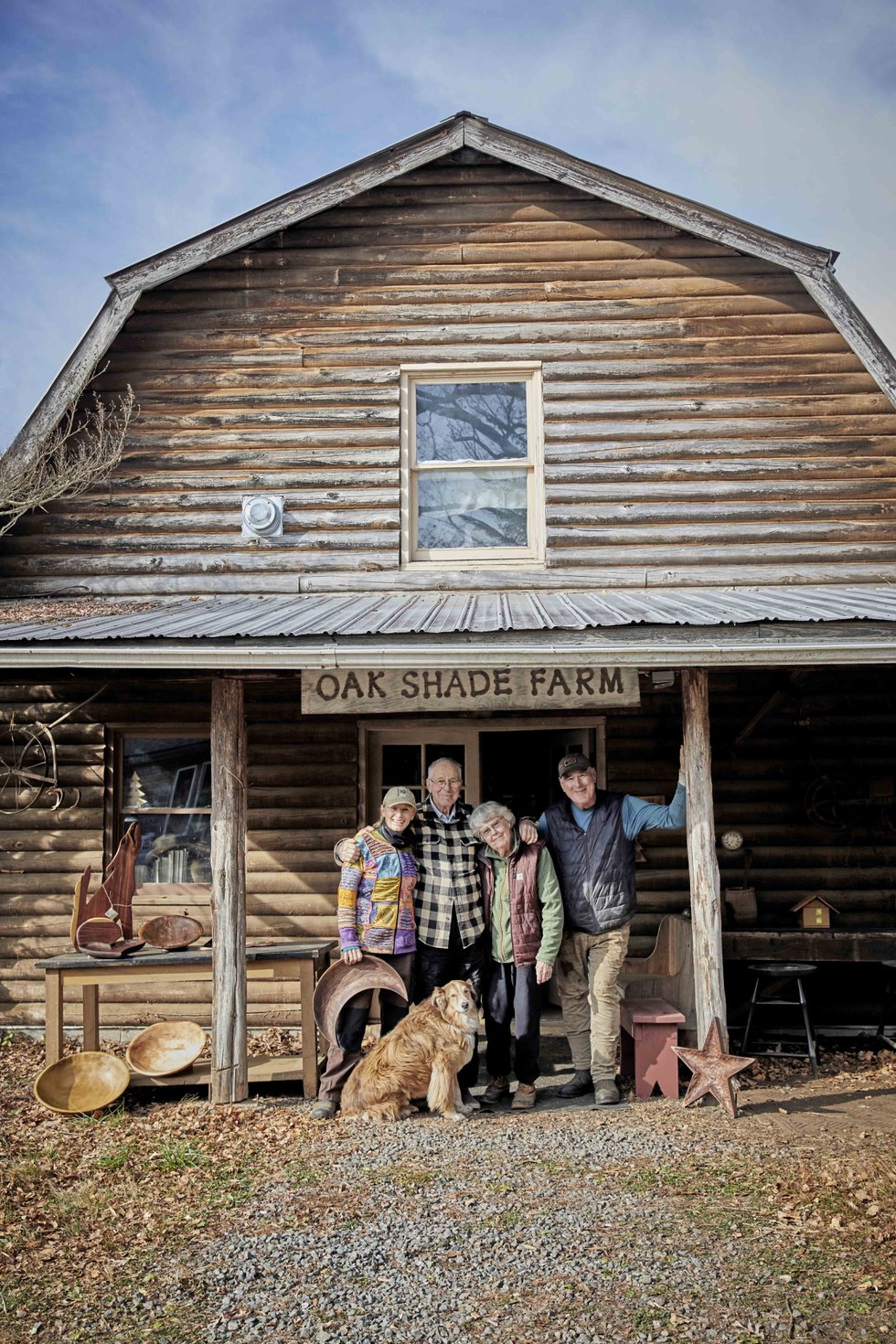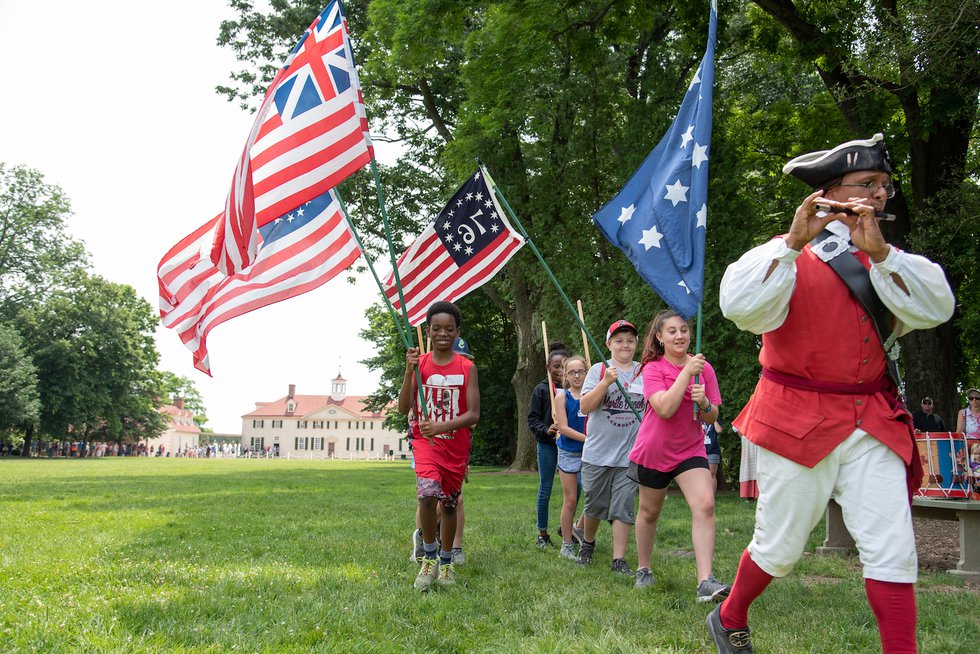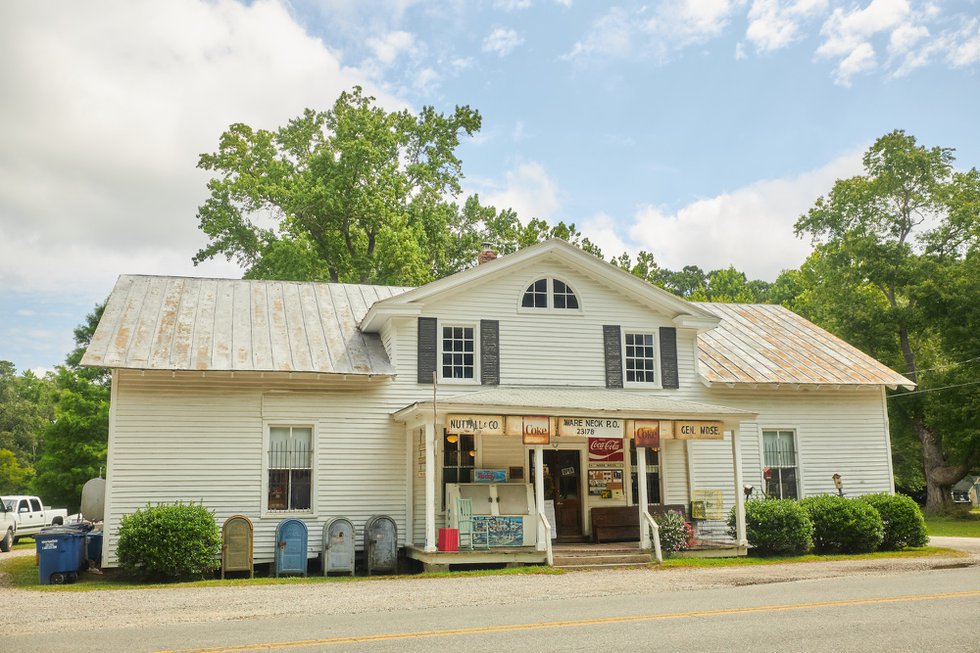Line dancing is the perfect way to wrap up our three-day getaway to Culpeper, a town with rural roots and a down-home country vibe. The historic district—with its old-timey lantern posts, freshly painted storefronts, striped awnings, and flowering plants—is impressive, a welcome antidote to strip malls and big box stores. In the 1960s, construction of highway bypasses threatened the viability of tiny towns across America, including Culpeper. Fortunately, it’s now a designated Virginia Main Street, part of the Main Street America program that helps revitalize these windows into the souls of communities.
But, out in the county, another side of Culpeper awaits. Tucked among the hills and valleys, visionary farmers and entrepreneurs share their excitement about the region’s future while staying connected to the past.
To get a sense of Culpeper’s rural lifestyle, we are visiting a few agri-tourism destinations. As Robin and I approach Belmont Farm Distillery, the faint smell of toasted grain and notes of caramel wafts from the open door. Meet Chuck and Jeanette Miller, owners of the first craft distillery in the U.S., which they started 32 years ago. “We kinda set the bar for the rest of ’em,” says Chuck, a former pilot. Remember ole Jed on The Beverly Hillbillies and the crime drama Barnaby Jones? That’s Chuck, who bears a striking resemblance to TV star Buddy Ebsen.
Chuck learned to make moonshine from his grandfather, whose car, he recalls, was riddled with bullet holes. “They were always out to get him, but they never did,” Chuck says. He decided to go into the business in 1988 because “I had five kids and a lot of bills.” He shows Robin and me his 3,000-gallon copper pot still made in New York in 1933, the year Prohibition ended, and then proceeds to explain how raw ingredients are transformed into tasty libations.
Chuck credits the clean flavor of the spirits he makes—moonshine, whiskey, gin, rum, and vodka in a variety of flavors—to their water, which is sourced from a layer of limestone. “You need good water to make good mash, and you need good mash to make good whiskey.”

Culpeper
The still runs all day. But who does all the work? “My wife. I keep her busy,” says Chuck with a mischievous grin. In fact, their son-in-law, Jay Durkee, is head distiller and keeps everything “bubbling and gurgling.”
In the tasting room, Cheryl Buys, Belmont Farm Brand Ambassador and Manager, pours samples for Robin and me. I ask which is her favorite, and she says it’s the bonded whiskey, six years old. “To be bonded,” she explains, “you have to do everything here on the farm.”
Jeanette Miller says her favorite is Golden Gin, which gets its color from being barrel-aged and has a light, refreshing flavor reminiscent of botanicals and oak. There’s one secret ingredient in the gin, says Jeanette, but mum’s the word, adding. “I’m not going to tell you!”
Robin, who hails from Franklin County, “the wettest county in the world,” appreciates the rustic vibe at Belmont Distillery. “It’s just like you find in the woods in Franklin County,” she says, “but on a bigger scale.”
Wine, Beer, and Spirits
Ryan Kearney, 32, manager of Old House Vineyards, also credits the tasty water for his farm’s delicious libations. As Virginia’s first trifecta, Old House produces wine, beer, and spirits and welcomes hundreds of guests each week to their beautiful farm, which spreads across rolling hills amid tranquil countryside. A focal point is Old House Lake with its own island and lakeside pavilion, both of which serve as settings for weddings. The winery also offers a large restaurant and tasting room, an authentic Irish Pub, and a museum devoted to WWII.

“My parents bought the property in 1998, and my dad planted the first vines in 1999,” explains Kearney. The 165-acre winery gets its name from the old farmhouse (circa 1800s), which became the original tasting room. Since the first wines were released in 2001, Old House has expanded its offerings to include a distillery that opened in 2014, a brewery and taproom which opened in 2018, and a cidery that’s just starting to produce.
After Robin and I sample Old House wines, Kearney takes us on a tour starting with the Irish Pub. Decorated with flags and dark polished wood, the large venue features a long bar and makes us feel like we’re across the Pond. Next we enter the distillery, which Kearney describes as “the most niche” compared to the winery and brewery. His favorite spirit is the Agave Nectar, a Virginia version of tequila. The most popular is their corn whiskey.
Adjacent to the distillery is the WWII Museum, built by Kearney’s father, Patrick, whose primary occupation was architectural millwork and the fabrication of various museums. The museum, which also has a bar and offers tastings, is a time capsule of June 6, 1944. “You feel a sense of history,” he says of the authentic memorabilia and military gear, all of which have been donated to the museum over the years. Retired military people love to sit at the bar amid the memorabilia and watch footage of D-Day on the television as they taste their favorite libation. “They get rolling with the stories,” Kearney says.
Tree Talk at Oak Shade
At Oak Shade Farm in Rixeyville, more stories are in store. A pretty gal with a German accent welcomes Robin and me, leads us to a semi-circle of Adirondack chairs facing west, and offers iced tea. “I’m EK Mello,” she says, “and this is Jim.” A tall, fit octogenarian rises from his chair and, after shaking hands, invites us to sit a spell, sip our tea, and enjoy the view. Mello, Jim’s daughter-in-law, joins us, and before long Jim starts telling us the story of the farm, which he and his wife purchased in 1985. “When we bought the place, we wanted to see what the land and we could do together,” he tells us.

Culpeper
Originally, the property was meant to be a retreat for Jim, Sally, their daughter, and two sons—an escape from Jim’s busy career as assistant director for the Museum of Natural History in D.C. and a place for the family to commune with nature. “My rule was once you got here, you could do anything you wanted,” Jim recalls.
The family began growing Christmas trees, the ideal crop for a part-time farmer. After retiring, Jim and Sally moved into the log cabin they had built, and began expanding into other niche activities like beekeeping and growing shiitake mushrooms. “We did that for 28 years,” says Jim.
Today Christmas trees remain the farm’s primary product and are available from Thanksgiving to Christmas. EK and her husband, Roger, are finishing up planting 2500 new seedlings, one of many crops of Norway spruce and white pine that the family has growing on their land. It takes an average of seven years for a tree to grow to Christmas-tree size.
“It’s a cut-your-own farm,” Jim continues. “The idea is we give you a saw and you go find the tree you like.” He encourages visitors to walk the trails and loves to show them his woodshop, where he spends much of his time building chairs and benches and anything else he’s inspired to create.
EK and Roger also work with wood and have opened a shop called Mellowood at the farm. The wood pieces range from cutting boards to handmade gifts, house wares, decorations, and toys. EK explains that she “has the luxury to look at a piece of wood and ask, ‘What do you want to be?’”

Culpeper
Jim shares this sense of reverence for the trees that spread across the 20-acre farm and spends time among them in quiet contemplation. “The trees talk to you,” he says without a trace of irony. “They’re a presence that soaks into you.” He loves to share advice with anyone who wants to make a living from the land. “We like to meet young people who are giving up their aspiration for things and [instead] choosing experiences like sweating while you plant spinach or watching the sunset.”
He also finds it gratifying when families return year after year to chop down a carefully chosen Christmas tree. He offers expecting couples a potted seedling to take home and plant, and this year two visitors whose parents received seedlings came to the farm and told Jim “their” trees were thriving.
Don’t Miss the Murals
Identifying downtown Culpeper’s murals is its own walking tour. Grab a cuppa joe at Raven’s Nest and take a stroll to locate the town’s three murals:
- “The Surveyor”—at West and Cameron streets, a young George Washington, in a tri-corn hat and ready for surveying, stands larger than life at 10-feet.
- Historical Sign Refresh—various downtown locations, this mural project preserved, refreshed, and revived painted historical signage in keeping with their vintage look.
- “The Trailblazers”—at 254 E. Davis St., this mural portrays some of Culpeper’s black citizens who made an especially profound impact on the community.
The town’s Power Box Mural Program, launched by Culpeper Renaissance, is accepting proposals for murals on five powerboxes within the downtown footprint. The project’s goal is to pictorially preserve and celebrate the art, history, and culture of Culpeper while increasing its charm and character for residents and visitors. For more info, visit CulpeperDowntown.com.
A Tale of Two Places
Culpeper is two places really. The town, a thriving beehive of activity, brims with trendy restaurants, boutiques, and art galleries. But out in the county among hallowed grounds, where soldiers fought to unite this country we call home, there’s a different vibe. Life moves more slowly, and you can sense deep roots and an abiding love for the land. Those hallowed ground and roots include a storied history—as the home of the Culpeper Minutemen, a pro-Independence militia, formed at the Courthouse, and as the crossroads for a number of armies marching through Central Virginia during the Civil War.
Now, Culpeper is as much a bedroom community for folks fleeing the congestion of NoVa and D.C., as it is a farming community. Some say the surrounding area is the de facto epicenter of the state’s regenerative agriculture and sustainability movement, with farms like Moving Meadows, Honey Brook, and Virginia Bison focusing on holistic animal management practices, soil building, wildlife habitat, ground water purity, and growing organic food.
Hometown Pride

Culpeper
Yet no matter where we go, the folks we meet are enthusiastic about their hometown. I can see why. Everyone gets along here—from the overall-clad farmer who drives a tractor through the middle of downtown to the brawny fellas wearing plaid shirts and ball caps who line the lunch counter at Frost Café, to the bluegrass musicians who gather every Saturday for their weekly jam session at Culpeper Music to the gals and guys who love to line dance at the local bar.
In Culpeper, the welcome mat really means what it says.
Department of Corrections
A previous version of this story mistakenly identified Belmont Farm Distillery’s master distiller Jay Durkee as Tim Smith, good friend of owner Chuck Miller. Jay Durkee is Miller’s son-in-law and the master distiller, not Tim Smith. We regret the error.








